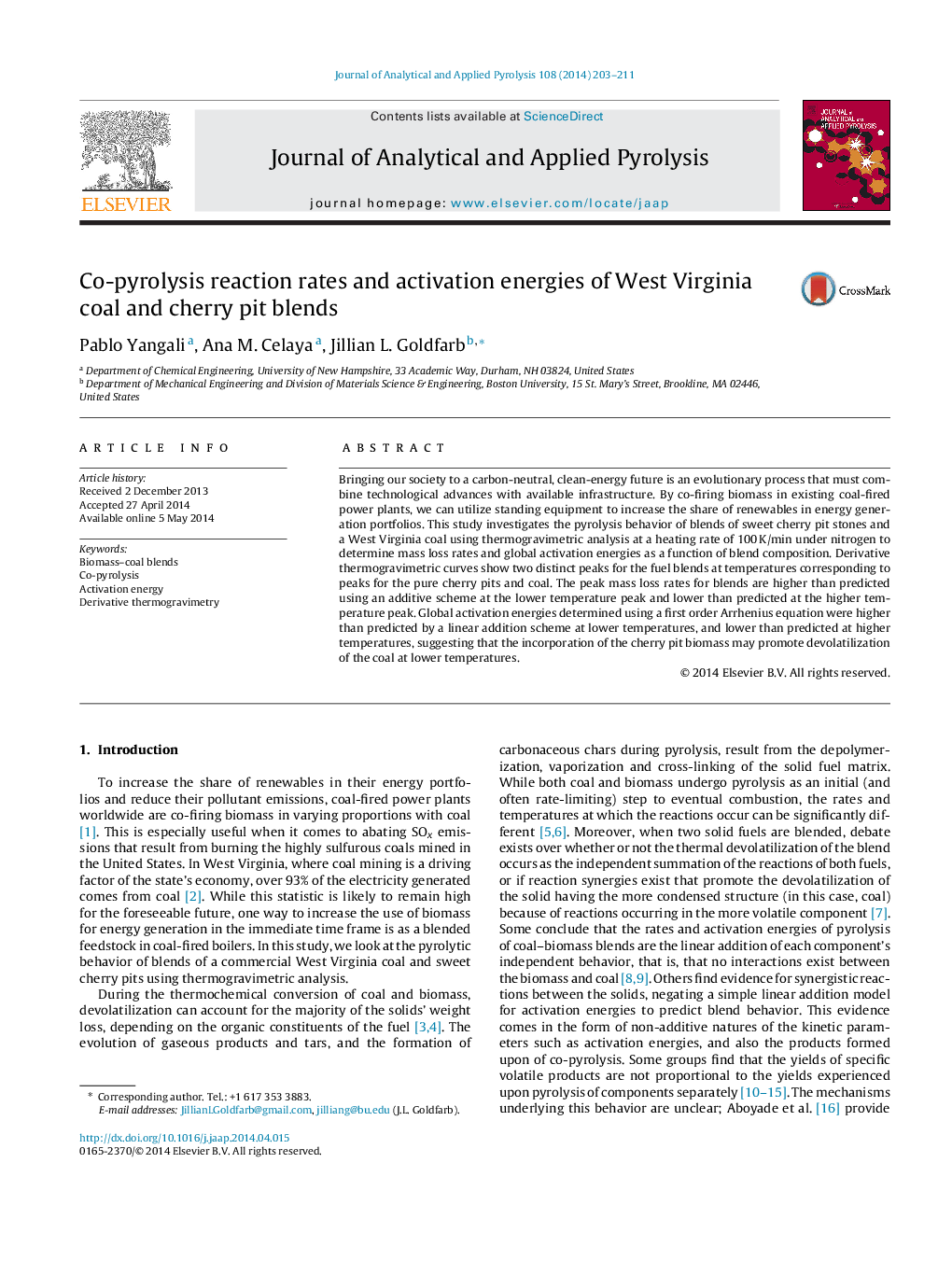| Article ID | Journal | Published Year | Pages | File Type |
|---|---|---|---|---|
| 1196677 | Journal of Analytical and Applied Pyrolysis | 2014 | 9 Pages |
•Total blend conversion is a function of biomass fraction, up to 70 wt%.•Rate of coal pyrolysis at low temperature increased by biomass addition.•Activation energies of blend are non-linear function of the blend composition.•Additive scheme under-predicts Ea at low temperatures, over-predicts at high T.•Biomass blending may promote devolatilization of coal at lower temperatures.
Bringing our society to a carbon-neutral, clean-energy future is an evolutionary process that must combine technological advances with available infrastructure. By co-firing biomass in existing coal-fired power plants, we can utilize standing equipment to increase the share of renewables in energy generation portfolios. This study investigates the pyrolysis behavior of blends of sweet cherry pit stones and a West Virginia coal using thermogravimetric analysis at a heating rate of 100 K/min under nitrogen to determine mass loss rates and global activation energies as a function of blend composition. Derivative thermogravimetric curves show two distinct peaks for the fuel blends at temperatures corresponding to peaks for the pure cherry pits and coal. The peak mass loss rates for blends are higher than predicted using an additive scheme at the lower temperature peak and lower than predicted at the higher temperature peak. Global activation energies determined using a first order Arrhenius equation were higher than predicted by a linear addition scheme at lower temperatures, and lower than predicted at higher temperatures, suggesting that the incorporation of the cherry pit biomass may promote devolatilization of the coal at lower temperatures.
